The Ultimate Body Armor Guide
Body armor is confusing for most people if you haven’t been exposed to it before. With all of the different levels and different companies coming up with their own special levels that fall in between the National Institute of Justice (NIJ) levels.
We’re going to demystify all of these levels and let you know exactly what you should buy for your particular situation.
[wc_toggle title=“Table of Contents” padding=“” border_width=“” class=“armor” layout=“box”]
- Ultimate Body Armor Guide
- Types of Body Armor
- Level IIa Body Armor
- What Does Level IIa Body Armor Protect Against?
- Level II Body Armor
- What Does Level II Body Armor Protect Against?
- Level IIIa Body Armor
- What Does Level IIIa Body Armor Protect Against?
- Level III Body Armor
- What Does Level III Body Armor Protect Against?
- Level IV Body Armor
- What Does Level IV Body Armor Protect Against?
- How to Choose Body Armor
- How Body Armor Works
- What Is Body Armor Made Of?
- Does Body Armor Protect Against Anything Other than Bullets?
- Backpack Body Armor
- Is Body Armor Legal?
- Who Needs Body Armor?
- Conclusion
[/wc_toggle]
Types of Body Armor
Keep in mind that there are always situations that can change how body armor performs against certain types of ammo. This is especially true when they’re faced with very high-velocity rounds. Speed defeats body armor better than anything else!
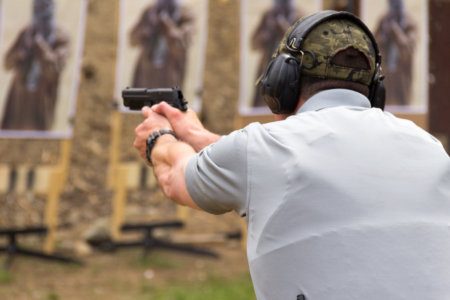
Level IIa Body Armor
Level IIa body armor provides a level of protection that we don’t feel is sufficient and really just doesn’t make sense overall.
Normally, we choose body armor based on the expected threats that we’re likely to face and whether we need to conceal it. This means that you’d want to wear level IIa armor when you need concealable body armor and need protection from pistol rounds…but it only protects from some pistol rounds meaning that there’s a very good chance that the threat you’re facing can still defeat your armor!
For this reason, we always suggest that you wear level II body armor as a minimum level of protection.
What Does Level IIa Body Armor Protect Against?
The NIJ requires level IIa armor to stop up to a .40 Smith and Wesson round. This means that it will also stop all pistol rounds that are less powerful.
Level IIa armor is capable of defeating some pistol rounds. These include the 9mm, .40 S&W, .45 ACP & .38 Special.
Higher-velocity rounds can still penetrate level IIa body armor. This includes some of the previously listed rounds when they’re fired from a submachinegun length barrel and all rifle rounds.
| Body Armor Level | Effective Against These Calibers |
|---|---|
| II-A | 9 mm FMJ (Full Metal Jacket) at ~1,090 fps.40 S&W Full Metal Jacket at 1,025 fps |
Level II Body Armor
Level II body armor is the minimum level of protection that we recommend if you think you need to defend yourself from pistol rounds and still need (or want) to conceal your body armor. With level II armor you’re getting much better protection that you would with level IIa and it’s still almost as concealable.
Level II body armor can keep you safe from all but the most powerful pistol rounds. If you don’t need to have concealable body armor, we’d suggest going for level IIIa armor instead of level II.
What Does Level II Body Armor Protect Against?
As we stated before, the NIJ requires level II armor to stop up to a .357 Magnum round. This means that it will also stop all pistol rounds that are less powerful.
Level II armor is capable of defeating most pistol rounds. These include the .357 Magnum, 9mm, .40 S&W, .45 ACP & .38 Special.
Keep in mind that certain very high-velocity rounds can still penetrate level II body armor. This includes some of the previously listed rounds when they’re fired from a submachinegun length barrel and all rifle rounds.
| Body Armor Level | Effective Against These Calibers |
|---|---|
| II | 9 mm FMJ, at ~1,175 fps.357 JSP at ~1,400 fps |
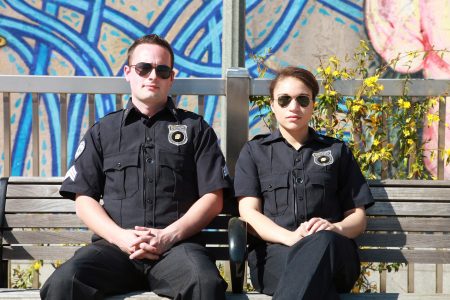
Level IIIa Body Armor
Level IIIa body armor is designed to protect you from practically any pistol round. It can stop up to a .44 magnum so you’re not likely to come across a pistol that will defeat it under normal circumstances.
Level IIIa can come in both soft or hard versions with the soft armor panels still being pretty concealable.
What Does Level IIIa Body Armor Protect Against?
As we stated before, the NIJ requires level IIIa armor to stop up to a .44 Magnum round and almost all pistol rounds lower in caliber.
Level IIIa armor is capable of defeating most pistol rounds. These include the .44 Magnum, .357 Magnum, .357 SIG, 9mm, .40 S&W, .45 ACP & .38 Special.
Level IIIa armor is designed to stop most pistol rounds. It can still be defeated by certain types of very high-velocity pistol rounds and all rifle rounds.
| Body Armor Level | Effective Against These Calibers |
|---|---|
| III-A | 9 mm FMJ at ~1,400 fps.44 Magnum Semi-Jacketed Hollow Point at ~1,400 fps |
Level III Body Armor
Level III body armor is hard armor designed to stop many rifle rounds out there. These are plates worn on top of soft armor or by themselves.
Make sure that you know exactly what you’re buying from the manufacturer since level III armor is sometimes improved upon to provide guaranteed protection from certain rounds that can defeat other level III armors.
What Does Level III Body Armor Protect Against?
The NIJ requires level III armor to stop up to a 7.62mm NATO round moving 2780 ft/sec. This means that it is capable of stopping most rifle rounds that you’re likely to encounter.
Level III armor is capable of defeating most rifle rounds. Steel plates are usually capable of protecting from 5.56mm green tip “penetrator” rounds while UHMWPE level III armor usually cannot.
Level III composite armor may or may not be able to stop gree tip ammo, depending on the design of the plate itself.
| Body Armor Level | Effective Against These Calibers |
|---|---|
| III | .308 Winchester Full Metal Jacket = 7.62 X 51 mm NATO rounds at ~ 2,750 fps |
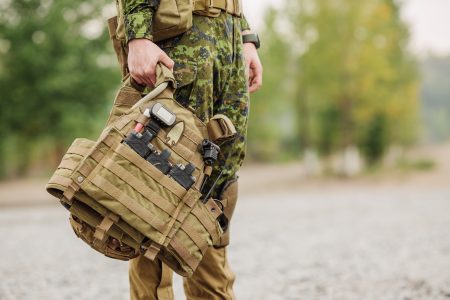
Level IV Body Armor
Level IV body armor is the highest level of protection available. They typically weigh about as much as level III armor but are made of materials that make them more expensive.
If you’re looking for the most protection that you can get from body armor then level IV armor is what you’re looking for.
What Does Level IV Body Armor Protect Against?
The NIJ requires level IV armor to stop up to a .30 caliber Armor Piercing round moving 2880 ft/sec. This means that it is capable of stopping almost any rifle round out there short of extremely large caliber weapons.
Level IV armor is capable of defeating most rifle rounds .30 caliber and smaller.
| Body Armor Level | Effective Against These Calibers |
|---|---|
| IV | 30-06 Armor-Piercing .30 M2 AP One round at ~ 2,850 fps |
How to Choose Body Armor
Choosing the right type of body armor for your situation can be confusing, but it doesn’t have to be. Follow the flowchart below to help you decide what type of armor is best for you.
- Are you going to be facing pistol fire or rifle fire?
- Is it okay if others know that you’re wearing body armor?
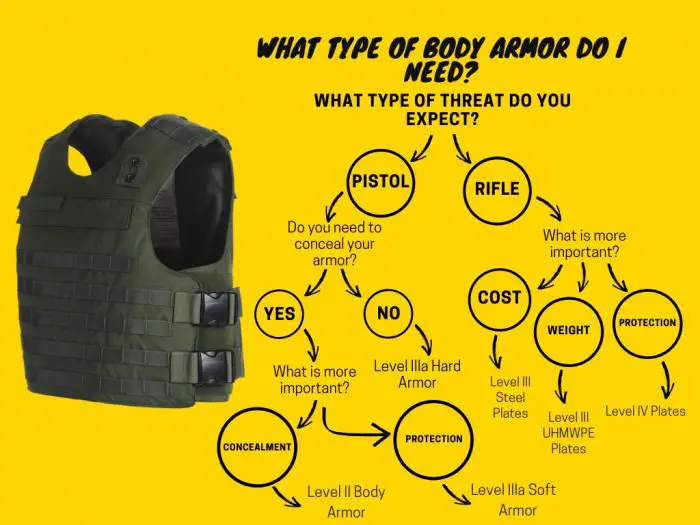
How Body Armor Works
Soft body armor stop bullets by slowing them down and rapidly draining them of their energy. Its design of tightly woven synthetic fibers allows it to retain its flexibility and still be remarkably strong.
Even though the fibers are strong, their protective levels can decrease rapidly after being shot. Most manufacturers claim their soft body armor is capable of protecting from multiple strikes. You should know that the armor does become compromised to at least some degree when it’s shot.
Soft armor also transfers a lot of blunt force trauma to the wearer. That’s why soft armor usually has some kind of trauma plate placed of vital organs like the heart.
Hard body armor functions in different ways depending on the materials that it’s made of.
Steel armor plates stop bullets be simply being very dense and strong. The bullet typically hits the armor and shatters into many smaller pieces.
Ceramic plates are made with extremely hard non-metallic materials. These plates stop projectiles by deforming them as they pass through the ceramic material, reducing their energy and penetrating ability.
They are very good at stopping penetrating rounds but are much more delicate than steel or UHMWPE armor plates. They also suffer from relatively poor multi strike performance. To help counter these weaknesses, ceramic plates normally have some kind of metal, polyethylene or aramid fiber backing.
UHMWPE (Ultra-High-Molecular-Weight Polyethylene) plates are made of sheets of specialized plastic pressed together to form dense, relatively light, armor that some claim is stronger than metal. The plates slow and deform the bullet as it passes through the UHMWPE material.
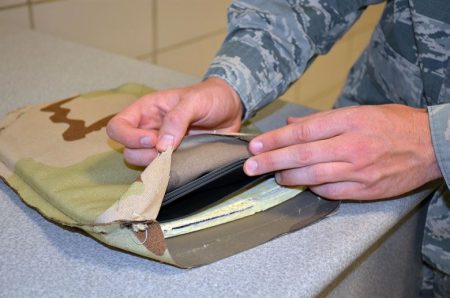
What Is Body Armor Made Of?
Soft body armor is made using ballistic materials like Spectra and Kevlar.
If an armor panel is made of Kevlar it will normally be tightly woven in a simple pattern and interlaced with more material as the panel is built. Spectra is normally not woven like Kevlar. Instead, the fibers are laid out parallel to one another and then laminated into sheets.
The bare ballistic material is then put inside an outer shell. These sleeves don’t provide any addition to the protection level of the armor but some are designed to catch any fragments that may come free when the bullet strikes.
Hard armor plates made from steel use steels specifically designed to be especially hard to stop projectiles as they strike the armor. These steels are tested to ensure uniformity in their thickness and density across the plate. They also normally have a layer to reduce bullet spalling. This rubber-like coating stops the spalling of rounds that impact the armor and prevent it from hitting the wearer in areas like their neck, arms, and legs.
Steel plates are heavy making them difficult for some people to wear for extended periods of time, but they have the benefit of being less expensive and not as thick as most other armor types.
Ceramic armor plates are made of inorganic, non-metallic materials that are extremely strong. The most common material used in making ceramic armor is boron carbide and other materials like it.
The backside of ceramic armor usually has a ballistic backing of some kind to help give them more multi-strike strength. They tend to be lighter than steel armor but much more expensive.
UHMWPE plates are constructed from layers of polyurethane sheets and fibers pressed together under high heat and pressure. These plates are usually very thick compared to armor made from other materials but they are also extremely lightweight and they actually float.
UHMWPE armor does very well against multiple strikes and is more durable than ceramic plates. The downside is it should not be stored in high heat (like a car sitting in the sun) and can melt if it comes in contact with flames.
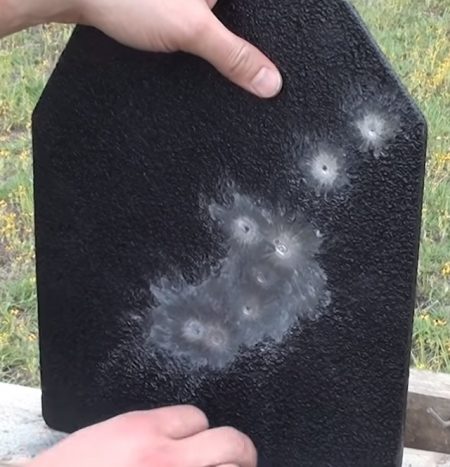
Does Body Armor Protect Against Anything Other than Bullets?
Most body armor isn’t designed to protect against anything other than the bullets that the NIJ standard. To guarantee stab protection you’ll want to buy stab-resistant armor.
Kevlar and other ballistic materials are very good at stopping the fragmentation from things like explosions. As frag passes through the layers of kevlar, it slows it the same way that it would stop a bullet.
This makes soft armor good as a backing for heavier level III armor and level IV armor, especially for military members and police special tactics teams. This usefulness may extend to anyone in a dangerous area should the U.S. fall into a state of lawlessness after a large scale disaster.
Soft armor doesn’t protect very well from slash or stab attacks. In stab proof armor, there is normally a layer of chain mail or laminate material in the body armor to stop knife or spike attacks. Level IIa armor usually resists slashing attacks well, but stabbing attacks can pass straight through it.
If you need both ballistic protection and bladed protection, then you should look for body armor that combines the two types of protection and is certified to stop those threats.
Hard armor isn’t specifically designed to protect against anything other than what it is tested against. It does, however, offer protection against fragmentation from IEDs and other explosive devices as well as slashing and piercing weapons.
The Difference Between Stab Proof and Bullet Proof
Body armor is usually rated according to NIJ standards to stop a certain caliber of a bullet traveling at a certain speed. Body armor tested this way does not have a stab-proof rating as well unless it is tested to the NIJ standards for stab resistance as well.
The NIJ has three levels of stab resistance that it tests. Level I is designed to stop low energy knife attacks, level II is tested to stop medium power knife attacks and level III is tested to stop the highest level of knife attacks.
The main way that soft armor stops bullets is by blunting the bullet and absorbing the energy of the blunted bullet. When a knife stabs a similar material, it spreads the tight weave of the fibers and lets the blade pass straight through.
| NIJ Stab Resistant Armor Rating | Resistance Level |
|---|---|
| Level I | 17.7 ft/lb with ¼ inch of penetration and 26.6 ft/lb with ¾ inch of penetration. |
| Level II | 24.3 ft/lb with ¼ inch of penetration and 36.9 ft/lb with ¾ inch of penetration. |
| Level III | 31.7 ft/lb with ¼ inch of penetration and 47.9 ft/lb with ¾ inch of penetration. |
To make soft armor stab-proof, manufacturers will add things like chain mail, metal inserts or plastic inserts to their armor. This puts a physical barrier in the way of the blade as it tries to pass thought the armor and keeps the armor flexible.
Body armor designed to stop more powerful rounds like those from a rifle will usually stop a knife attack. They aren’t tested against knives and aren’t specifically rated to stop them but they are made of materials that are usually too strong for a knife to penetrate.
Stab proof vests are most often used in countries like the UK and New Zeland where the threat of being shot is much lower than it is in the United States. In those countries, police, paramedics and most others that work in the emergency response area all wear stab protective vests. In the U.S. police officers typically wear vests that offer ballistic protection instead of knife resistance since getting shot is much more likely for them.
Backpack Body Armor
Backpack body armor has been marketed to the public for quite a few years now. Before that, there were people just buying soft or hard armor and putting them in their backpacks. Purchasing purpose-made backpacks and armor or just buying the armor and putting it in your current pack are both viable options if you’re looking to get into backpack body armor.
Some companies are making purpose-built backpacks that have special pockets to hold armor panels and plates. AR 500 Armor is a good place to find these backpacks.
If you’re looking for something that in no way says armor to anyone looking at it, then you may want to buy the bag and plates separately. Any pack with a bladder pouch makes a good candidate for armor. Just make sure you measure well before you order the plates so you’re sure you’re getting the right size.
Something like this CamelBak BFM Mil Spec Antidote is great for sliding a plate into and no one would really think your Camelbak can stop bullets.
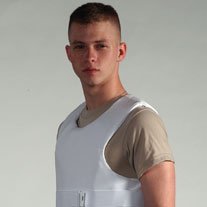
Is Body Armor Legal?
This is not legal advice. Please check with a lawyer if you have any questions about the legality of body armor in your area.
Body Armor Legality in the United States: In the United States it is illegal to possess body armor if you are a convicted felon. In Connecticut, it is illegal to ship body armor meaning that all sales must be made face to face. Many other states have made it a felony to commit a violent crime while wearing body armor. Others have made it illegal to wear body armor on school grounds. Check your local laws to be sure!
There has been some talk among politicians in the U.S. about making body armor illegal.
Body Armor Legality in Canada: In Alberta, British Columbia, Manitoba, and Nova Scotia a license is required to possess body armor. In the remaining provinces, there are no restrictions.
Body Armor Legality in the UK: In the United Kingdom, there are currently no legal restrictions on the purchase and ownership of body armor.
Body Armor Legality in Australia: In Australia, it is illegal to possess body armor without proper authorization in South Australia, Victoria, Northern Territory, ACT, Queensland, and New South Wales.
Is it Legal to Wear Body Armor in Public?
Again, check your local laws.
If it’s legal to own body armor in your area then it should be legal to wear it in public. The only time that wearing body armor will become illegal is when committing a crime. In the U.S. this is usually a felony.
The bigger problem that you run into while wearing body armor in public is the reaction of the people that happen to see you. It may very well be legal, but it could lead to you having the police called on you.
With society’s sensitivity to anything that looks scary, you should give serious consideration to if you should be out in public wearing body armor. It may not be illegal, but it could freak people out and cause you an unnecessary headache.

Who Needs Body Armor?
Body armor is a no brainer for police and military, but does the average civilian need body armor? That really depends on how you feel about the world.
Anyone who attends school in person from kindergarten to college should consider backpack body armor. Backpack body armor is a good idea just in case there’s another school shooting. It could also be good for just about anyone who can’t wear armor all day long but wants to have protection just in case.
Ultimately, anyone that believes they have a chance of getting shot now or in the future really needs to seriously consider buying body armor. There are many disasters where body armor could come in handy.
Conclusion
Body armor comes in a wide range of protective levels ranging from stab-proof all the way to armor-piercing rifle rounds which can make it confusing when you’re trying to decide which type of body armor is for you! Hopefully, this article helped answer some questions that you may have had about body armor.
The blog post The Ultimate Body Armor Guide! – Everything You Need to Know was first published to: https://readylifestyle.com/
The Ultimate Body Armor Guide! – Everything You Need to Know published first on https://readylifesytle.tumblr.com
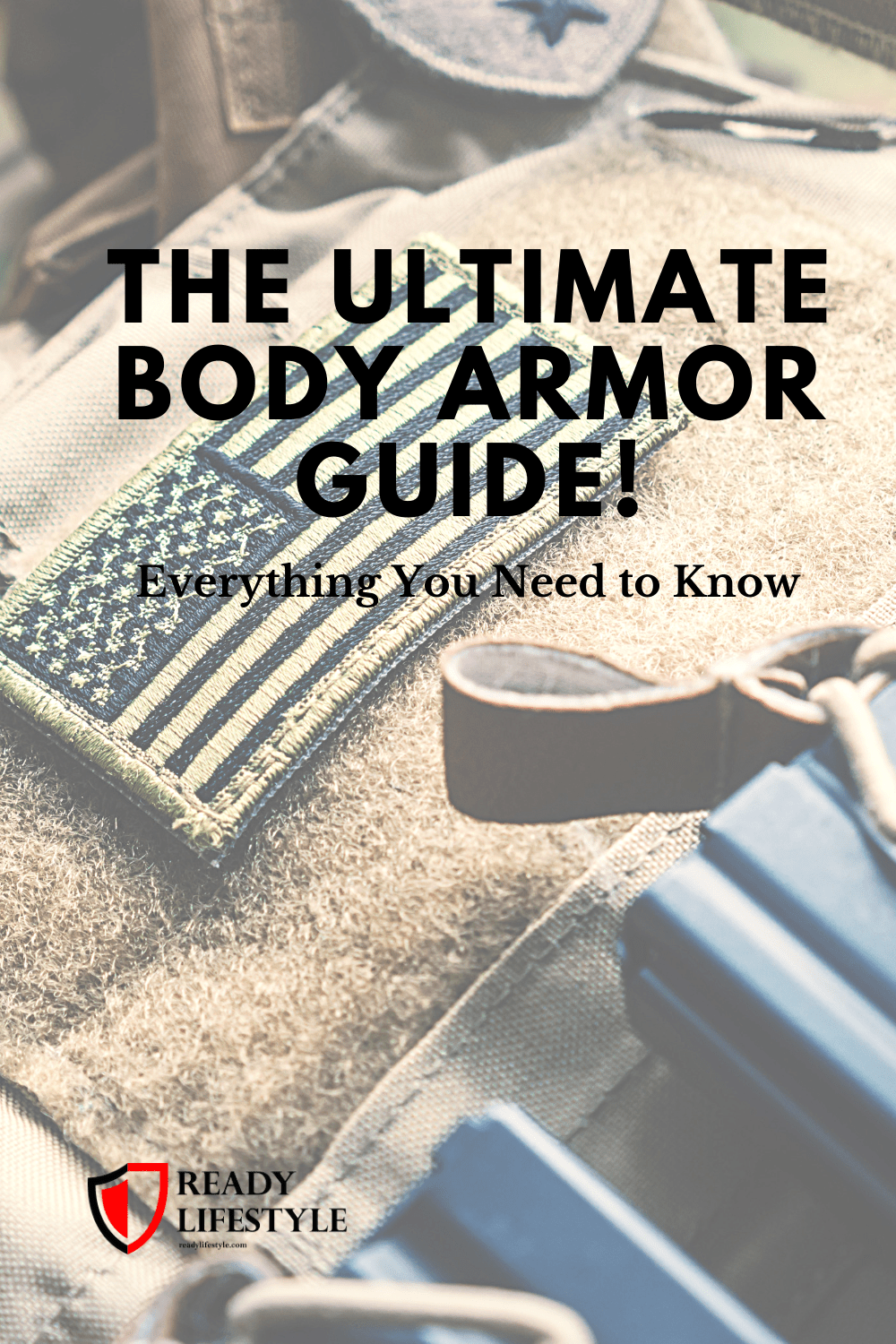
Comments
Post a Comment